Blood pressure targets for the treatment of people with hypertension and cardiovascular disease
- PMID: 36398903
- PMCID: PMC9673465
- DOI: 10.1002/14651858.CD010315.pub5
Blood pressure targets for the treatment of people with hypertension and cardiovascular disease
Abstract
Background: This is the third update of the review first published in 2017. Hypertension is a prominent preventable cause of premature morbidity and mortality. People with hypertension and established cardiovascular disease are at particularly high risk, so reducing blood pressure to below standard targets may be beneficial. This strategy could reduce cardiovascular mortality and morbidity but could also increase adverse events. The optimal blood pressure target in people with hypertension and established cardiovascular disease remains unknown.
Objectives: To determine if lower blood pressure targets (systolic/diastolic 135/85 mmHg or less) are associated with reduction in mortality and morbidity compared with standard blood pressure targets (140 mmHg to 160mmHg/90 mmHg to 100 mmHg or less) in the treatment of people with hypertension and a history of cardiovascular disease (myocardial infarction, angina, stroke, peripheral vascular occlusive disease).
Search methods: For this updated review, we used standard, extensive Cochrane search methods. The latest search date was January 2022. We applied no language restrictions.
Selection criteria: We included randomized controlled trials (RCTs) with more than 50 participants per group that provided at least six months' follow-up. Trial reports had to present data for at least one primary outcome (total mortality, serious adverse events, total cardiovascular events, cardiovascular mortality). Eligible interventions involved lower targets for systolic/diastolic blood pressure (135/85 mmHg or less) compared with standard targets for blood pressure (140 mmHg to 160 mmHg/90 mmHg to 100 mmHg or less). Participants were adults with documented hypertension and adults receiving treatment for hypertension with a cardiovascular history for myocardial infarction, stroke, chronic peripheral vascular occlusive disease, or angina pectoris.
Data collection and analysis: We used standard Cochrane methods. We used GRADE to assess the certainty of the evidence.
Main results: We included seven RCTs that involved 9595 participants. Mean follow-up was 3.7 years (range 1.0 to 4.7 years). Six of seven RCTs provided individual participant data. None of the included studies was blinded to participants or clinicians because of the need to titrate antihypertensive drugs to reach a specific blood pressure goal. However, an independent committee blinded to group allocation assessed clinical events in all trials. Hence, we assessed all trials at high risk of performance bias and low risk of detection bias. We also considered other issues, such as early termination of studies and subgroups of participants not predefined, to downgrade the certainty of the evidence. We found there is probably little to no difference in total mortality (risk ratio (RR) 1.05, 95% confidence interval (CI) 0.91 to 1.23; 7 studies, 9595 participants; moderate-certainty evidence) or cardiovascular mortality (RR 1.03, 95% CI 0.82 to 1.29; 6 studies, 9484 participants; moderate-certainty evidence). Similarly, we found there may be little to no differences in serious adverse events (RR 1.01, 95% CI 0.94 to 1.08; 7 studies, 9595 participants; low-certainty evidence) or total cardiovascular events (including myocardial infarction, stroke, sudden death, hospitalization, or death from congestive heart failure (CHF)) (RR 0.89, 95% CI 0.80 to 1.00; 7 studies, 9595 participants; low-certainty evidence). The evidence was very uncertain about withdrawals due to adverse effects. However, studies suggest more participants may withdraw due to adverse effects in the lower target group (RR 8.16, 95% CI 2.06 to 32.28; 3 studies, 801 participants; very low-certainty evidence). Systolic and diastolic blood pressure readings were lower in the lower target group (systolic: mean difference (MD) -8.77 mmHg, 95% CI -12.82 to -4.73; 7 studies, 8657 participants; diastolic: MD -4.50 mmHg, 95% CI -6.35 to -2.65; 6 studies, 8546 participants). More drugs were needed in the lower target group (MD 0.56, 95% CI 0.16 to 0.96; 5 studies, 7910 participants), but blood pressure targets at one year were achieved more frequently in the standard target group (RR 1.20, 95% CI 1.17 to 1.23; 7 studies, 8699 participants).
Authors' conclusions: We found there is probably little to no difference in total mortality and cardiovascular mortality between people with hypertension and cardiovascular disease treated to a lower compared to a standard blood pressure target. There may also be little to no difference in serious adverse events or total cardiovascular events. This suggests that no net health benefit is derived from a lower systolic blood pressure target. We found very limited evidence on withdrawals due to adverse effects, which led to high uncertainty. At present, evidence is insufficient to justify lower blood pressure targets (135/85 mmHg or less) in people with hypertension and established cardiovascular disease. Several trials are still ongoing, which may provide an important input to this topic in the near future.
Trial registration: ClinicalTrials.gov NCT00000620 NCT01206062 NCT00059306 NCT01650402 NCT01230216 NCT00421863 NCT01563731 NCT01198496 NCT03015311 NCT03808311 NCT04647292 NCT04030234 NCT03585595 NCT03666351 NCT04040634 NCT04036409.
Copyright © 2022 The Cochrane Collaboration. Published by John Wiley & Sons, Ltd.
Conflict of interest statement
LCS: none.
JGo: none.
JGa: none.
MCC: has received funding from Servier for a training course on innovation in hospital settings, unrelated to the topic of this systematic review.
JE: none.
LL: none.
Figures

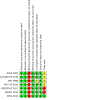

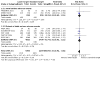
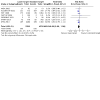
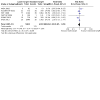
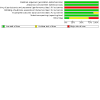
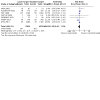
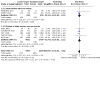

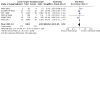
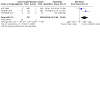
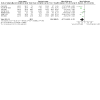
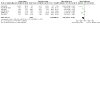
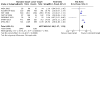
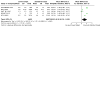
Update of
-
Blood pressure targets for the treatment of people with hypertension and cardiovascular disease.Cochrane Database Syst Rev. 2020 Sep 9;9(9):CD010315. doi: 10.1002/14651858.CD010315.pub4. Cochrane Database Syst Rev. 2020. Update in: Cochrane Database Syst Rev. 2022 Nov 18;11:CD010315. doi: 10.1002/14651858.CD010315.pub5. PMID: 32905623 Free PMC article. Updated.
References
References to studies included in this review
AASK 2002 {published and unpublished data}
-
- Appel LJ, Middleton J, Miller ER 3rd, Lipkowitz M, Norris K, Agodoa LY, et al. The rationale and design of the AASK cohort study. Journal of the American Society of Nephrology 2003;14(7 Suppl 2):S166-72. [PMID: ] - PubMed
-
- Norris K, Bourgoigne J, Gassman J, Hebert L, Middleton J, Phillips RA, et al. Cardiovascular outcomes in the African American Study of Kidney Disease and Hypertension (AASK) trial. American Journal of Kidney Diseases 2006;48(5):739-51. [PMID: ] - PubMed
-
- Wright JT Jr, Bakris G, Greene T, Agodoa LY, Appel LJ, Charleston J, et al. Effect of blood pressure lowering and antihypertensive drug class on progression of hypertensive kidney disease: results from the AASK trial. JAMA 2002;288(19):2421-31. [PMID: ] - PubMed
ACCORD BP 2010 {published and unpublished data}
-
- Buse JB, Bigger JT, Byington RP, Cooper LS, Cushman WC, Friedewald WT, et al. Action to Control Cardiovascular Risk in Diabetes (ACCORD) trial: design and methods. American Journal of Cardiology 2007;99(12A):21i-33i. [PMID: ] - PubMed
-
- Cushman WC, Grimm RH Jr, Cutler JA, Evans GW, Capes S, Corson MA, et al, ACCORD Study Group. Rationale and design for the blood pressure intervention of the Action to Control Cardiovascular Risk in Diabetes (ACCORD) trial. American Journal of Cardiology 2007;99(12A):44i-55i. [PMID: ] - PubMed
HOT 1998 {published and unpublished data}
-
- Hansson L, Zanchetti A, Carruthers SG, Dahlöf B, Elmfeldt D, Julius S, et al. Effects of intensive blood-pressure lowering and low-dose aspirin in patients with hypertension: principal results of the Hypertension Optimal Treatment (HOT) randomised trial. HOT Study Group. Lancet 1998;351(9118):1755-62. [PMID: ] - PubMed
-
- Hansson L, Zanchetti A. The Hypertension Optimal Treatment (HOT) Study: 24-month data on blood pressure and tolerability. Blood Pressure 1997;6(5):313-7. [PMID: ] - PubMed
-
- Hansson L, Zanchetti A. The Hypertension Optimal Treatment (HOT) Study – patient characteristics: randomization, risk profiles, and early blood pressure results. Blood Pressure 1994;3(5):322-7. [PMID: ] - PubMed
-
- Hansson L. The Hypertension Optimal Treatment Study (the HOT Study). Blood Pressure 1993;2(1):62-8. [PMID: ] - PubMed
-
- Zanchetti A, Hansson L, Clement D, Elmfeldt D, Julius S, Rosenthal T, et al. Benefits and risks of more intensive blood pressure lowering in hypertensive patients of the HOT study with different risk profiles: does a J-shaped curve exist in smokers? Journal of Hypertension 2003;21(4):797-804. [DOI: 10.1097/01.hjh.0000052482.18130.b2] [PMID: ] - DOI - PubMed
PAST BP 2016 {published data only}29062286
-
- Fletcher K, Mant J, McManus R, Campbell S, Betts J, Taylor C, et al. Protocol for PAST BP: a randomised controlled trial of different blood pressure targets for people with a history of stroke of transient ischaemic attack (TIA) in primary care. BMC Cardiovascular Disorders 2010;10:37. [DOI: 10.1186/1471-2261-10-37] [PMID: ] - DOI - PMC - PubMed
-
- Mant J, McManus R, Roalfe A, Fletcher K, Taylor C, Martin U, et al. RCT of different systolic blood pressure targets for people with a history or stroke or transient ischaemic attack: the PAST-BP (Prevention After Stroke – Blood Pressure) study. Journal of Human Hypertension 2014;28:627-8.
-
- Mant J, McManus RJ, Roalfe A, Fletcher K, Taylor CJ, Martin U, et al. Different systolic blood pressure targets for people with history of stroke or transient ischaemic attack: PAST-BP (Prevention After Stroke – Blood Pressure) randomised controlled trial. BMJ 2016;352:i708. [DOI: 10.1136/bmj.i708] - DOI - PMC - PubMed
PRESERVE 2021 {published data only}ISRCTN37694103
-
- Croall ID, Tozer DJ, Moynihan B, Khan U, O'Brien JT, Morris RG, et al. Effect of standard vs intensive blood pressure control on cerebral blood flow in small vessel disease. The PRESERVE randomized clinical trial. JAMA Neurology 2018;75(6):720-7. [DOI: 10.1001/jamaneurol.2017.5153] [ISRCTN37694103] - DOI - PMC - PubMed
-
- ISRCTN37694103. How intensively should we treat blood PRESsure in established cERebral small VEssel disease? www.isrctn.com/ISRCTN37694103 (first received 25 January 2012).
-
- Markus HS, Egle M, Croall ID, Sari H, Khan U, Hassan A, et al. PRESERVE. Randomized trial of intensive versus standard blood pressure control in small vessel disease. Stroke 2021;52:2484-93. - PubMed
SPRINT 2015 {published data only}
-
- Ambrosius WT, Sink KM, Foy CG, Berlowitz DR, Cheung AK, Cushman WC, et al. The design and rationale of a multicenter clinical trial comparing two strategies for control of systolic blood pressure: the Systolic Blood Pressure Intervention Trial (SPRINT). Clinical Trials 2014;11(5):532-46. [DOI: 10.1177/1740774514537404] [PMID: ] - DOI - PMC - PubMed
-
- Williamson JD, Supiano MA, Applegate WB, Berlowitz DR, Campbell RC, Chertow G, et al. Intensive vs standard blood pressure control and cardiovascular disease outcomes in adults aged ≥75 years: a randomized clinical trial. JAMA 2016;315(24):2673-82. [DOI: 10.1001/jama.2016.7050] [PMID: ] - DOI - PMC - PubMed
SPS3 2013 {published data only}
References to studies excluded from this review
BBB 1994 {published data only}
-
- BBB Study Group. The BBB study: a prospective randomized study of intensified antihypertensive treatment. Journal of Hypertension 1988;6(9):693-7. [PMID: ] - PubMed
-
- Hannson L. The BBB study: the effect of intensified antihypertensive treatment on the level of blood pressure, side-effects, morbidity and mortality in "well-treated" hypertensive patients. Behandla Blodtryck Battre. Blood Pressure 1994;3(4):248-54. [PMID: ] - PubMed
HOSP 2006 {published data only}
-
- Kawano Y, Mannami T, Saitoh D, Kojima S, Etani H, Tsuchihashi T, et al. Hypertension control based on HOme Systolic Pressure (HOSP) study: design and interim report of the main study. Journal of Hypertension 2006;24(Suppl 6):329-30.
-
- Kawano Y. HOSP study. Nihon Rinsho [Japanese Journal of Clinical Medicine] 2006;64(Suppl 6):465-9. [PMID: ] - PubMed
INFINITY 2019 {published data only}
-
- White WB, Marfatia R, Schmidt J, Wakefield DB, Kaplan RF, Bohannon RW, et al. INtensive versus standard ambulatory blood pressure lowering to prevent functional DeclINe in the ElderlY (INFINITY). American Heart Journal 2013;165(3):258-65.e1. [DOI: 10.1016/j.ahj.2012.11.008] [PMID: ] - DOI - PMC - PubMed
MDRD 1994 {published and unpublished data}
-
- Klahr S, Levey AS, Beck GJ, Caggiula AW, Hunsicker L, Kusek JW, et al. The effects of dietary protein restriction and blood-pressure control on the progression of chronic renal disease. Modification of Diet in Renal Disease Study Group. New England Journal of Medicine 1994;330(13):877-84. [PMID: ] - PubMed
NCT01230216 {published data only}
-
- NCT01230216. Effect of intensive blood pressure control on progression of coronary atherosclerosis: randomized evaluation by intravascular ultrasound. clinicaltrials.gov/show/NCT01230216 (first received 28 October 2010).
PODCAST 2013 {published data only}85562386
-
- Blackburn DJ, Krishnan K, Fox L, Ballard C, Burns A, Ford GA, et al. Prevention of Decline in Cognition after Stroke Trial (PODCAST): a study protocol for a factorial randomised controlled trial of intensive versus guideline lowering of blood pressure and lipids. Trials 2013;14:401. [PMID: ] - PMC - PubMed
REIN‐2 2005 {published data only}
-
- Ruggenenti P, Perna A, Loriga G, Ganeva M, Ene-Iordache B, Turturro M, et al. Blood-pressure control for renoprotection in patients with non-diabetic chronic renal disease (REIN-2): multicentre, randomised controlled trial. Lancet 2005;365(9463):939-46. [PMID: ] - PubMed
RESTART‐AP 2013 {published data only}
-
- Arima H, Wang J, Bladin C, Heeley E, Billot L, Barzi F, et al. Rationale of the REstart or STop Antithrombotics Randomised Trial in Asia Pacific (RESTART-AP). Cerebrovascular Diseases 2013;36(Suppl 1):39-40.
References to studies awaiting assessment
ABCD‐H 1998 {published data only}
-
- Estacio RO, Jeffers BW, Hiatt WR, Biggerstaff SL, Gifford N, Schrier RW. The effect of nisoldipine as compared with enalapril on cardiovascular outcomes in patients with non-insulin-dependent diabetes and hypertension. New England Journal of Medicine 1998;338(10):645-52. [PMID: ] - PubMed
-
- Estacio RO, Savage S, Nagel NJ, Schrier RW. Baseline characteristics of participants in the Appropriate Blood Pressure Control in Diabetes trial. Controlled Clinical Trials 1996;17(3):242-57. [PMID: ] - PubMed
-
- Savage S, Johnson Nagel N, Estacio RO, Feig PU, MacCarthy EP, Lukken NJ, et al. The ABCD (Appropriate Blood Pressure Control in Diabetes) trial. Rationale and design of a trial of hypertension control (moderate or intensive) in type II diabetes. Online Journal of Current Clinical Trials 1993;2(1):1-25. [PMID: ] - PubMed
Cardio‐Sis 2014 {published data only}
-
- Cardio-Sis Study Group, Verdecchia P, Staessen JA, Achilli A, Simone G, Ganau A, Mureddu G, et al. Randomized study of traditional versus aggressive systolic blood pressure control (Cardio-Sis): rationale, design and characteristics of the study population. Journal of Human Hypertension 2008;22(4):243-51. [DOI: 10.1038/sj.jhh.1002313] - DOI - PubMed
-
- Verdecchia P, Staessen JA, Angeli F, Simone G, Achilli A, Ganau G, et al, Cardio-Sis investigators. Usual versus tight control of systolic blood pressure in non-diabetic patients with hypertension (Cardio-Sis): an open-label randomised trial. Lancet 2009;374(9689):525-33. [DOI: 10.1016/S0140-6736(09)61340-4] - DOI - PubMed
ESH‐CHL‐SHOT 2014 {published data only}
-
- Zanchetti A, Liu L, Mancia G, Parati G, Grassi G, Stramba-Badiale M, et al. Blood pressure and LDL-cholesterol targets for prevention of recurrent strokes and cognitive decline in the hypertensive patient: design of the European Society of Hypertension-Chinese Hypertension League Stroke in Hypertension Optimal Treatment randomized trial. Journal of Hypertension 2014;32(9):1888-97. [DOI: 10.1097/HJH.0000000000000254] [PMID: ] - DOI - PubMed
RESPECT 2019 {published data only (unpublished sought but not used)}
STABLE‐ICAS 2018 {published data only (unpublished sought but not used)}
-
- Park JM, Kim BJ, Kwon SU, Hwang YH, Heo SH, Rha JH, et al. Intensive blood pressure control may not be safe in subacute ischemic stroke by intracranial atherosclerosis: a result of randomized trial. Journal of Hypertension 2018;36:1936-41. - PubMed
STEP 2021 {published data only}
-
- NCT03015311. Strategy of blood pressure intervention in the elderly hypertensive patients (STEP) [Strategy of systolic blood pressure intervention in the elderly hypertensive patients: a prospective randomized open-label blinded-endpoint trial]. clinicaltrials.gov/show/NCT03015311 (first received 2 January 2017).
Zeng 2016 {published data only (unpublished sought but not used)}
-
- Zeng X, Zeng XH, Liu ZH, Li YY, Zeng XJ, Chen XY. Ten year target systolic blood pressure less than 120 mmHg for more than 65 aged hypertension patients with chronic renal disease. European Heart Journal Supplements 2016;37:264. [Abstract: P1456]
References to ongoing studies
BPROAD 2019 {published data only}
-
- NCT03808311. Blood Pressure Control Target in Diabetes (BPROAD). clinicaltrials.gov/ct2/show/NCT03808311 (first received 17 January 2019).
EPICS‐Pilot 2020 {published data only}
-
- NCT04647292. European blood pressure intensive control after stroke (EPICS-Pilot). clinicaltrials.gov/ct2/show/NCT04647292 (first received 30 November 2020).
ESPRIT 2019 {published data only}
-
- NCT04030234. Effects of Intensive Systolic Blood Pressure Lowering Treatment in Reducing RIsk of Vascular evenTs (ESPRIT). clinicaltrials.gov/ct2/show/NCT04030234 (first received 23 July 2019).
IBIS 2019 {published data only}
-
- NCT03585595. Intensive Blood Pressure Intervention in Stroke (IBIS) trial. clinicaltrials.gov/ct2/show/NCT03585595 (first received 13 July 2018).
NCT03666351 {published data only}
-
- NCT03666351. Study to evaluate the effect on improvement of LVH by the control of BP in hypertension patients with AV disease. clinicaltrials.gov/ct2/show/NCT03666351 (first received 11 September 2018).
OPTIMAL‐DIABETES 2019 {published data only}
-
- NCT04040634. OPtimal blood pressure for the prevenTIon of Major vAscuLar Events in patients with DIABETES Mellitus (OPTIMAL-DIABETES). clinicaltrials.gov/ct2/show/NCT04040634 (first received 1 August 2019).
OPTIMAL Stroke 2019 {published data only}
-
- NCT04036409. OPtimal blood pressure for the prevenTIon of Major vAscuLar Events in Stroke Patients (OPTIMAL Stroke). clinicaltrials.gov/ct2/show/NCT04036409 (first received 29 July 2019).
Additional references
ACC‐AHA 2017
-
- Whelton PK, Carey RM, Aronow WS, Casey DE, Collins KJ, Himmelfarb CD, et al. 2017 ACC/AHA/AAPA/ABC/ACPM/AGS/APhA/ASPC/NMA/PCNA guideline for the prevention, detection, evaluation, and management of high blood pressure in adults. Journal of the American College of Cardiology 2017;17:S0735-S1097. [DOI: 10.1016/j.jacc.2017.11.006] - DOI
AHA 2007
-
- Rosendorff C, Black HR, Cannon CP, Gersh BJ, Gore J, Izzo JL, et al American Heart Association Council for High Blood Pressure Research, American Heart Association Council on Clinical Cardiology, American Heart Association Council on Epidemiology and Prevention. Treatment of hypertension in the prevention and management of ischemic heart disease: a scientific statement from the American Heart Association Council for High Blood Pressure Research and the Council on Clinical Cardiology and Epidemiology and Prevention. Circulation 2007;115(21):2761-88. [DOI: 10.1161/circulationaha.107.183885] - DOI - PubMed
Arguedas 2013
Arguedas 2020
Auer 2018
Bangalore 2010
Bangalore 2011
-
- Bangalore S, Kumar S, Lobach I, Messerli FH. Blood pressure targets in subjects with type 2 diabetes mellitus/impaired fasting glucose: observations from traditional and Bayesian random-effects meta-analyses of randomized trials. Circulation 2011;123(24):2799-810. [PMID: ] - PubMed
Bangalore 2013
-
- Bangalore S, Kumar S, Volodarskiy A, Messerli FH. Blood pressure targets in patients with coronary artery disease: observations from traditional and Bayesian random effects meta-analysis of randomised trials. Heart (British Cardiac Society) 2013;99(9):601-13. [PMID: ] - PubMed
Bangalore 2017
BPLTTC 2013
-
- Blood Pressure Lowering Treatment Trialists' Collaboration, Ninomiya T, Perkovic V, Turnbull F, Neal B, Barzi F, Cass A, et al. Blood pressure lowering and major cardiovascular events in people with and without chronic kidney disease: meta-analysis of randomised controlled trials. BMJ 2013;347:f5680. [DOI: 10.1136/bmj.f5680] - DOI - PMC - PubMed
BPLTTC 2014
BPLTTC 2021
-
- Blood Pressure Lowering Treatment Trialists' Collaboration. Pharmacological blood pressure lowering for primary and secondary prevention of cardiovascular disease across different levels of blood pressure: an individual participant-level data meta-analysis. Lancet 2021;397:1625-36. [DOI: 10.1016/S0140-6736(21)00590-0] - DOI - PMC - PubMed
Brunström 2016
Carey 2020
CHEP 2015
-
- Daskalopoulou SS, Rabi DM, Zarnke KB, Dasgupta K, Nerenberg K, Cloutier L, et al. The 2015 Canadian Hypertension Education Program. Recommendations for blood pressure measurement, diagnosis, assessment of risk, prevention, and treatment of hypertension. Canadian Journal of Cardiology 2015;31(5):549-68. [DOI: 10.1016/j.cjca.2015.02.016] - DOI - PubMed
Drozda 2011
-
- Drozda J Jr, Messer JV, Spertus J, Abramowitz B, Alexander K, Beam CT, et al. ACCF/AHA/AMA-PCPI 2011 performance measures for adults with coronary artery disease and hypertension: a report of the American College of Cardiology Foundation/American Heart Association Task Force on Performance Measures and the American Medical Association-Physician Consortium for Performance Improvement. Circulation 2011;124(2):248-70. [PMID: ] - PubMed
ESC 2016
-
- Piepoli MF, Hoes AW, Agewall S, Albus C, Brotons C, Catapano AL, et al. 2016 European Guidelines on cardiovascular disease prevention in clinical practice: the Sixth Joint Task Force of the European Society of Cardiology and Other Societies on Cardiovascular Disease Prevention in Clinical Practice. European Heart Journal 2016;37(29):2315-81. [DOI: 10.1093/eurheartj/ehw106] - DOI - PMC - PubMed
ESC 2022
ESH 2009
ESH‐ESC 2007
-
- Mancia G, Backer G, Dominiczak A, Cifkova R, Fagard R, Germano G, et al. 2007 Guidelines for the management of arterial hypertension: the Task Force for the Management of Arterial Hypertension of the European Society of Hypertension (ESH) and of the European Society of Cardiology (ESC). European Heart Journal 2007;28(12):1462-536. [DOI: 10.1093/eurheartj/ehm236] [PMID: ] - DOI - PubMed
ESH‐ESC 2013
-
- Mancia G, Fagard R, Narkiewicz K, Redon J, Zanchetti A, Böhm M, et al. 2013 ESH/ESC guidelines for the management of arterial hypertension: the Task Force for the Management of Arterial Hypertension of the European Society of Hypertension (ESH) and of the European Society of Cardiology (ESC). European Heart Journal 2013;34(28):2159-219. [DOI: 10.1093/eurheartj/eht151] - DOI - PubMed
ESH‐ESC 2018
Ettehad 2016
-
- Ettehad D, Emdin CA, Kiran A, Anderson SG, Callender T, Emberson J, et al. Blood pressure lowering for prevention of cardiovascular disease and death: a systematic review and meta-analysis. Lancet 2016;387(10022):957-67. - PubMed
Farnett 1991
-
- Farnett L, Mulrow CD, Linn WD, Lucey CR, Tuley MR. The J-curve phenomenon and the treatment of hypertension. Is there a point beyond which pressure reduction is dangerous? JAMA 1991;265(4):489-95. - PubMed
Feldstein 2014
Filippone 2011
GBD 2017 Mortality
-
- GBD 2017 Causes of Death Collaborators. Global, regional, and national age-sex-specific mortality for 282 causes of death in 195 countries and territories, 1980–2017: a systematic analysis for the Global Burden of Disease Study 2017. Lancet 2018;392(10159):1736-88. [10.1016/S0140-6736(18)32203-7] - PMC - PubMed
GBD 2017 Risk factors
-
- GBD 2017 Risk Factor Collaborators. Global, regional, and national comparative risk assessment of 84 behavioural, environmental and occupational, and metabolic risks or clusters of risks for 195 countries and territories, 1990–2017: a systematic analysis for the Global Burden of Disease Study 2017. Lancet 2018;392(10159):1923-94. [DOI: 10.1016/S0140-6736(18)32225-6] - DOI - PMC - PubMed
Higgins 2022
-
- Higgins JP, Thomas J, Chandler J, Cumpston M, Li T, Page MJ, et al, editor(s). Cochrane Handbook for Systematic Reviews of Interventions Version 6.3 (updated February 2022). Cochrane 2022. Available from www.training.cochrane.org/handbook.
Hypertension CANADA 2020
-
- Rabi DM, McBrien KA, Sapir-Pichhadze R, Nakhla M, Ahmed SB, Dumanski SM, et al. Hypertension Canada's 2020 comprehensive guidelines for the prevention, diagnosis, risk assessment, and treatment of hypertension in adults and children. Canadian Journal of Cardiology 2020;36:596-624. [DOI: 10.1016/j.cjca.2020.02.086] - DOI - PubMed
ICH 1995
-
- European Medicines Agency. Clinical safety data management: definitions and standards for expedited reporting (CPMP/ICH/377/95), 1995. www.ema.europa.eu/docs/en_GB/document_library/Scientific_guideline/2009/... (accessed before 25 September 2017).
JNC‐7 2003
-
- Chobanian AV, Bakris GL, Black HR, Cushman WC, Green LA, Izzo JL, et al, National Heart, Lung, and Blood Institute Joint National Committee on Prevention, Detection, Evaluation, and Treatment of High Blood Pressure, National High Blood Pressure Education Program Coordinating Committee. The seventh report of the Joint National Committee on Prevention, Detection, Evaluation, and Treatment of High Blood Pressure. The JNC 7 Report. JAMA 2003;289(19):2560-72. [DOI: 10.1001/jama.289.19.2560] - DOI - PubMed
JNC‐8 2014
-
- James PA, Oparil S, Carter BL, Cushman WC, Dennison-Himmelfarb C, Handler J, et al. 2014 evidence-based guideline for the management of high blood pressure in adults: report from the panel members appointed to the Eighth Joint National Committee (JNC 8). JAMA 2014;311(5):507-20. [PMID: ] - PubMed
Kaul 2020
Kernan 2014
-
- Kernan WN, Ovbiagele B, Black HR, Bravata DM, Chimowitz MI, Ezekowitz MD, et al. Guidelines for the prevention of stroke in patients with stroke and transient ischemic attack: a guideline for healthcare professionals from the American Heart Association/American Stroke Association. Stroke 2014;45(7):2160-236. [PMID: ] - PubMed
Lewington 2002
-
- Lewington S, Clarke R, Qizilbash N, Peto R, Collins R, Prospective Studies Collaboration. Age-specific relevance of usual blood pressure to vascular mortality: a meta-analysis of individual data for one million adults in 61 prospective studies. Lancet 2002;360(9362):1903-13. - PubMed
Lim 2019
-
- Lim MK, Ha SC, Luk KH, Yip WK, Tsang CS, Wong MC. Update on the Hong Kong Reference Framework for Hypertension Care for Adults in Primary Care Settings – review of evidence on the definition of high blood pressure and goal of therapy. Hong Kong Medical Journal 2019;25(1):64-7. [DOI: 10.12809/hkmj187701] - DOI - PubMed
Lv 2012
Lv 2013
-
- Lv J, Ehteshami P, Sarnak MJ, Tighiouart H, Jun M, Ninomiya T, et al. Effects of intensive blood pressure lowering on the progression of chronic kidney disease: a systematic review and meta-analysis. Canadian Medical Association Journal 2013;185(11):949-57. [DOI: 10.1503/cmaj.121468] [PMID: ] - DOI - PMC - PubMed
Mancia 2011
Mancia 2014
-
- Mancia G, Grassi G. Aggressive blood pressure lowering is dangerous: the J-curve: pro side of the argument. Hypertension 2014;63(1):29-36. [PMID: ] - PubMed
McBrien 2012
-
- McBrien K, Rabi DM, Campbell N, Barnieh L, Clement F, Hemmelgarn BR, et al. Intensive and standard blood pressure targets in patients with type 2 diabetes mellitus: systematic review and meta-analysis. Archives of Internal Medicine 2012;172(17):1296-303. [PMID: ] - PubMed
Messerli 2006
-
- Messerli FH, Mancia G, Conti R, Hewkin AC, Kupfer S, Champion A, et al. Dogma disputed: can aggressively lowering pressure in hypertensive patients with coronary artery disease be dangerous? Annals of Internal Medicine 2006;144(12):884-93. - PubMed
Mozaffarian 2015
-
- Mozaffarian D, Benjamin EJ, Go AS, Arnett DK, Blaha MJ, Cushman M, et al, American Heart Association Statistics Committee and Stroke Statistics Subcommittee. Heart disease and stroke statistics – 2015 update: a report from the American Heart Association. Circulation 2015;131(4):e29-322. [PMID: ] - PubMed
NICE 2022
-
- National Institute for Heath and Care Excellence. Hypertension in adults: diagnosis and management. www.nice.org.uk/guidance/ng136 (accessed 22 March 2022).
Reboussin 2020 [pers comm]
-
- Reboussin DM. Random sequence generation method in SPRINT [personal communication]. E-mail to: LC Saiz 2 July 2020.
Review Manager 2014 [Computer program]
-
- Review Manager 5 (RevMan 5). Version 5.3. Copenhagen: Nordic Cochrane Centre, The Cochrane Collaboration, 2014.
Rosendorff 2009
-
- Rosendorff C, Black HR. Evidence for a lower target blood pressure for people with heart disease. Current Opinion in Cardiology 2009;24(4):318-24. [PMID: ] - PubMed
Rosendorff 2015
-
- Rosendorff C, Lackland DT, Allison M, Aronow WS, Black HR, Blumenthal RS, et al, American Heart Association, American College of Cardiology, and American Society of Hypertension. Treatment of hypertension in patients with coronary artery disease: a scientific statement from the American Heart Association, American College of Cardiology, and American Society of Hypertension. Hypertension 2015;65(6):1372-407. [PMID: ] - PubMed
Roy 2010
-
- Roy M, Mahmood N, Rosendorff C. Evidence for aggressive blood pressure-lowering goals in patients with coronary artery disease. Current Atherosclerosis Reports 2010;12(2):134-9. [PMID: ] - PubMed
Sánchez 2021
-
- Sánchez JF, Escudero-Sánchez G, Calderón-García JF, Rico-Martín S, Robles NR, Bacaicoa MA, et al. Systolic blood pressure and outcomes in stable outpatients with recent symptomatic artery disease: a population-based longitudinal study. International Journal of Environmental Research and Public Health 2021;18(17):9348. [DOI: 10.3390/ijerph18179348] - DOI - PMC - PubMed
SBU 2007
-
- SBU. Moderately elevated blood pressure. A systematic literature review. Swedish Council on Health Technology Assessment in Health Care (SBU); 2007. SBU report no 170. www.sbu.se/en/publications/sbu-assesses/moderately-elevated-blood-pressure/ (accessed prior to 25 September 2017).
Townsend 2016
Upadhyay 2011
Verdecchia 2014
-
- Verdecchia P, Angeli F, Mazzotta G, Garofoli M, Reboldi G. Aggressive blood pressure lowering is dangerous: the J-curve: con side of the argument. Hypertension 2014;63(1):37-40. [PMID: ] - PubMed
Verdecchia 2016
Vidal‐Petiot 2016
-
- Vidal-Petiot E, Ford I, Greenlaw N, Ferrari R, Fox KM, Tardif JC, et al. Cardiovascular event rates and mortality according to achieved systolic and diastolic blood pressure in patients with stable coronary artery disease: an international cohort study. Lancet 2016;388(10056):2142-52. [DOI: 10.1016/S0140-6736(16)31326-5] - DOI - PubMed
Vidal‐Petiot 2018
-
- Vidal-Petiot E, Sorbets E, Bhatt DL, Ducrocq G, Elbez Y, Ferrari R, et al. Potential impact of the 2017 ACC/AHA guideline on high blood pressure in normotensive patients with stable coronary artery disease: insights from the CLARIFY registry. European Heart Journal 2018;0:1-9. [DOI: 10.1093/eurheartj/ehy488] [ISRCTN43070564] - DOI - PMC - PubMed
WHO 2021
-
- World Health Organization. Guideline for the pharmacological treatment of hypertension in adults. apps.who.int/iris/bitstream/handle/10665/344424/9789240033986-eng.pdf (accessed 16 August 2022). [ISBN (ELECTRONIC VERSION): 978-92-4-003398-6]
Xie 2016
-
- Xie X, Atkins E, Lv J, Bennett A, Neal B, Ninomiya T, et al. Effects of intensive blood pressure lowering on cardiovascular and renal outcomes: updated systematic review and meta-analysis. Lancet 2016;387(10017):435-43. - PubMed
References to other published versions of this review
Gorricho 2013
-
- Gorricho J, Garjón J, Celaya MC, Muruzábal L, Montoya R, López Andrés A, et al. Blood pressure targets for the treatment of patients with hypertension and cardiovascular disease. Cochrane Database of Systematic Reviews 2013, Issue 1. Art. No: CD010315. [DOI: 10.1002/14651858.CD010315] - DOI - PMC - PubMed
Saiz 2017
-
- Saiz LC, Gorricho J, Garjón J, Celaya MC, Muruzábal L, Malón MD, et al. Blood pressure targets for the treatment of people with hypertension and cardiovascular disease. Cochrane Database of Systematic Reviews 2017, Issue 10. Art. No: CD010315. [DOI: 10.1002/14651858.CD010315.pub2] - DOI - PMC - PubMed
Saiz 2020
Publication types
MeSH terms
Associated data
LinkOut - more resources
Full Text Sources
Medical

